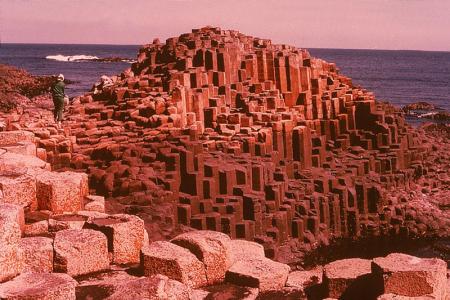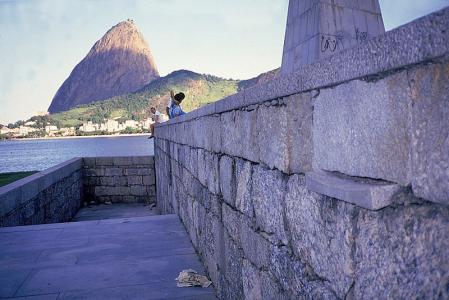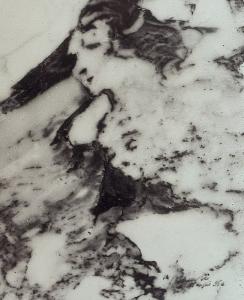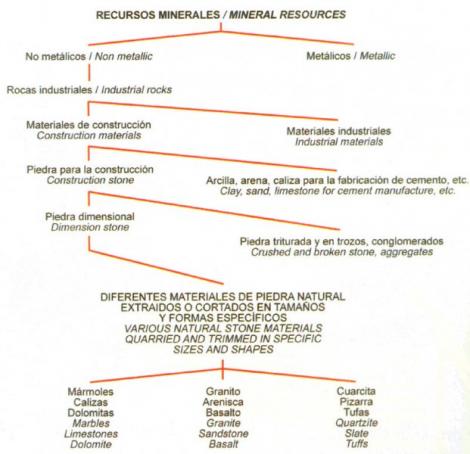Stone terminology is not exactly at the top of the agenda in the stone sector. However, standardization and globalization have increased awareness for communication needs and rapid change is now taken place in priorities.
The restricted terminology of the last century has been expanded by two main factors: the growth of disciplines interested in stone, like designing and restoration, and the emergence of new stone material sources with many and varied properties of stone. Environmental sensitivities, aesthetics and tastes, cultural and patrimonial elements and new qualities need a finessing of terms.


Promotional and economic concerns too necessitate more precise and extended product descriptions and specifications. Recently discovered dimension stone varieties from the developing countries, not marketed or used previously in sizeable projects, compete strongly with established stone products.
Description often lacks the technical diagnosis of likely quality variations in the newly opened beds or benches, terms confused at times. To the mason a "bed" means the horizontal face surface on which stones are laid in mortar, to the quarryman, a plane of stratification and to the geologist "a continuous mass of sediments deposited at about one time". This is only one example of the many terms with common usage and applied differently within the various disciplines.
Considering that much of the written record on stone internationally used is in English, the terms used in Great Britain are widely used when compiling glossaries or terminologies. Communication has become more important than ever and so do agreed standards for any ensuing applications of the stone, whether it implies worsening or enhancing reproducible results.
All these have added their generic definitions to stone related descriptions. Let us have a look what is contained in the name stone.
STONE
What is stone? Rock becomes stone after diminution and dimensioning. Then we have the various rock varieties like marble, granite etc. known as stone. However not all stone is marble, granite, or other varieties subject to geological, lithological and industrial definitions in the various glossaries. Yet all marble, granite etc. is stone.
Few terms in the stone industry have achieved in the last 50 years a rapid entrenchment like the word stone. A mere half a century ago we still had a marble industry, a granite industry, the slate industry etc. To talk about a stone industry was just short of contempt for the nobler, humbly named, "rock" varieties that include marble!
As recent as 1972 at a symposium at the San Ambrogio Fair, a prominent Italian geologist exclaimed "How dare you to call marble, a beautiful woman, stone". Yes, there were stone masons, stone working tools, stone sculptors and carvers, but to call associate marble or granite with the prefix "stone", was just not right, not fashionable.


Likewise no respectable marble fair in the second half of the last century, when Fairs started to become prolific, would want to be called a stone fair. Stone Industry or the more widely used Quarry Industry, modo grosso, implied at the time mainly aggregates and perhaps some sand production thrown in. With globalization, all that changed and there are now more fairs and trade exhibitions with the name stone than marble fairs. There is still uneasiness to convoke or name a "granite fair" notwithstanding the spectacular rise in the use of granite. Sophistication has veered into another direction and we have "covering" and "stone+tec" fairs, not to mention some more fancy prefixes.
Parallel with these developments technical and scientific congresses and meetings on the subject proliferated, many timed to run within the fair arrangements. Particularly those on restoration, rehabilitation, replication, reconstruction and refurbishing are the most numerous and well attended by architects and designers as opposed to geologists or engineers who are in a minority. Nevertheless, as a windfall such a mix enables a rare occasion for interchange of ideas and many a new "name" or denomination was born at fairs and shows.
Interaction with stone supply sources and the technical bodies is not less important than commercial cooperation. The limited interest by the technical professions in the dynamics of the stone industry and trade is becoming a thing of the past. A major contribution to this trend is the encouragement of professional participation in stone trade fairs notably at Nüremberg, Verona and Carrara. These and some of the smaller fairs provide a necessary backdrop for the discussion of technical aspects.
This is the more important since the nomenclature used by the industry is as rich as it is confusing and requires a special dialogue for mutual understanding. There are other aspects not always considered or easily within reach of the technical community. The mention of past and recent development impacts will contribute to interdisciplinary harmonization.
IN QUEST FOR A NAME
All the above developments have led to heated discussions, amongst other items, for an overall name for the products of the "stone sector". All do agree that we work with rocks, at least in the "natural" part of the sector. Stop for a moment. Is not rock also the base materials for engineered stone, cultured stone? But that is a different story.
So let us have a look at what is rock; when does a rock turn into stone? The varied meanings implied by turning "rock" into "stone" may have little connotation with dimension stone.
The Rock of Gibraltar, the Sugar Loaf in Rio, the Rockies, signifies cliffs, peaks or promontory to the geographer or morphologist. Ayer's Rock in Australia is a sandstone monolith to the geologist. In the USA, Alcatraz is known as the "rock". Scotch on the rock? Well…! To the engineer rock should be a firm and consolidated substance "rock solid", and so on. Uncertainties multiply when considering stone called by any other name.
Definitions are essential when explaining what can happen to stone before use, and to clarify and reduce controversy. Foremost on mind is the importance to agree on an umbrella term for the main products of the "stone sector", a name for the industry. Looking at the main term currently in use we come up with "dimension stone", DS for short.
DIMENSION STONE
Leading suggestions for an umbrella term include the use of "Natural Stone", "Dimension Stone" and "Ornamental Rocks". The IAEG C-10 group has adopted "Building Stone and Ornamental Rocks", a not very snappy term. It was felt at the time that "rock " as a parent term has to be included and "building stone" was necessary for the geotechnical objectives of IAEG (Int'l Association of Engineering Geology and the Environment) i.e. monographs, standards acceptance values and construction material typologies amongst other objectives.
Related stone groups like Osnet, affiliated to the EU have incorporated the less pretentious "Ornamental Stone" in their name. CEN TC 246, the official EN Technical Committee responsible for most recently accepted stone standards, uses "Natural Stone". And there is strong sympathy for that use as it covers all types of stone that come from "nature" and connotes at the same time environment.
Historically, Oliver Bowles made an early use of Dimension Stone in his book “The Stone Industries” (1934), primarily as a distinction from Crushed Stone i.e. aggregates. Louis W. Currier of the USGS and William R. Barton of the USBM gave the term further prominence in their publications, as was the case in the UNDP publication "Development Potential of Dimension stone" (1976).
The most recent addition to DS use has been the definition, though specifically for masonry in EN 12059 of "Dimensional stone work" as "a stone element prepared to specific dimensions for inside or outside application with > 80 mm nominal thickness", and hereby giving the blessing of the DS use. This term is now widely used by the industry and related organization. Yet there is still unhappiness concerning the wide meaning of the term DS which does not indicate the natural or ornamental nature of the product.
There are other possibilities. Most suggestions would prefer the incorporation of "rock" to indicate the raw material and regarding stone as a product, natural or processed, shaped and finished, to various extents. The adding of "ornamental" is another desirable term, looking at we see a piece of common coral rock, typically from reefs cringing around most of the Caribbean islands and other parts of the world. It's appearance in situ is a porous craggy rock used in vernacular building and landscaping or retention walling. However the sawn surfaces show that beauty is not skin deep, and enhanced by a red or pink-coloured cement filler in the voids can make it even look stunning.
To sum up some suggestions as prefixes for an umbrella term for the "industry" or sector:
"Ornamental Rock"
" Dimension Rock"
"Natural Rock"
"Natural Stone"
"Dimension Stone"
"OrnamentalStones"
"Building Stones and Ornamental Rock"
"Building Ornamental Stone"
"Stone"
TERMINOLOGY
Another complication is the translation or transliteration of DS into other languages. Germany uses Naturstein, France uses "Pierre Naturel"; Spain has Rocas, Portugal uses Rochas. This sample of translations is by no means formal or internationally agreed.
Changes in titles of stone trade journals dealing with Dimension Stone in the last decennias reflect a continuous quest for a proper mix of the contents and targets, especially for international circulation needs. The lack of consensus on the umbrella term affects, directly or indirectly, the promotion of stone. Stone or the stone sectors at best, are not sexy icons. It may even be doubtful that models on catwalks at some of the Fairs improve the promotional image.
GLOSSARIES + DENOMINATIONS
There are hundreds of lithological stone varieties presently in use. The diagram shown lists the main classes. Detailed information can be found in a number of glossaries. As far the stone trade is concerned EN 12670-2002 "Natural Stone-Terminology" is a consensus of terms of the various disciplines in the stone sector but still has to catch up with geotechnical terms constantly being added to meet the new developments including digital techniques and image processing.

However it lists and defines practically all the petrographic names, also shown in a number of classification diagrams annexed at the end, to meet the petrographic description demand in the CEN testing standards. EN 12670 was initially drafted in three official versions. However due to difficulties encountered similar to those in transliteration of Dimension Stone versions into other languages, translations into national languages are now the responsibilities of the CEN members, present and prospective.
Commercial stone names are listed in EN 12440-2000 and cover some 20 European countries. In addition to the traditional name and typical colour, the particular rock name and specific place of origin is given.
France submitted over 500 names; Spain over 400; Italy over 300; U.K. just under 300; Germany about 250; Portugal about 200; the Nordic countries about 220; Greece, Czech Republic, Switzerland, and Austria less than 100 each; Croatia, Slovenia, Ireland and Belgium less than 50 each. It is expected that with the newly joined EU countries there will be several important additions in the next revision of EN 12440.
Textures and structures on fabricated rock sources would be impossible to be included in the EN as they may vary within the deposit and some indicative surface features like textures and markings are given at the end of this article for guidance. These are useful for descriptions of samples or images in the commercial catalogue texts.
GEOTECHNICAL VS INDUSTRIAL ASPECTS
Without delving into the role of lithological descriptions in the naming of stone a few examples what is involved and what may happen to stone, or rather the name, on the way to become a product.
Commercially the name of stone product should be as short a possible and indicate location and colour besides the lithological name, e.g. Rojo Alicante or Shanxi Black. In case of a stone with an established overall colour e.g. Carrara; mention of "white" is of secondary importance. Several shades or textures may be added to the name e.g. Bardiglio, Arabescato or Venato as the case may be. However when we come to the lithology we have no hesitation to call Carrara a marble, being indisputable a metamorphic stone. It is also limestone because all marble is a variety of limestone. However not all limestone is marble, although all marble is stone. And that is where geological and industrial usage do not correspond.
Where physical differences exist for the various stone varieties, in case of doubt, a petrographic certification EN 12407 will settle the issue. But even then a basalt can be mineralogical a fine-grained gabbro and a norite is a gabbro with more orthopyroxene than clinopyroxene! A breccia may turn into an arabescato pattern when undergoing a high intensity metamorphism.
Colour descriptions like apple green is to be avoided, as a green apple from Australia is a different green from an apple in Worcester, England. Besides these geographical differences, it is to be noted that colour is not always foolproof. Heating yellow calcareous sandstone into red, ochre or orange at 200 to 250 degrees C or even red-violet between 400 and 500 and reddish gray at 600 degrees C can change colour. More so than in manufactured materials, the positive and the negative of stone material have to be pointed out, as properties of natural material cannot be engineered to specification.
Kitchen countertops, the use of which has increased in recent years, are prone to etching and solution by acidic liquids, causing bleaching. Red felspars turning whitish, the yellowing of white marble, the fading of some varieties of black 'granite' materials, often observed in tombstones or black limestones on facades, all have their explanations, usually athe expense of the denominated colour or shade.
Concern in the industry about esthetic and ornamental values is not less than in technical aspects, Yet complaints about changes in colour and shades are less numerous than those about mechanical or physical failures, and can be prevented by proper selection, use and sealing of the more decorative stone varieties. For fabrics, textures or pattern descriptions, where essential, an agreed list as e.g. in Annex may be used and is useful when looking for appropriate descriptions of samples or marking architectural mock-ups.
Mix-up of country names and varieties is not uncommon. Carrara white marble (the Venato variety) is still known to old-timers in the United Kingdom as 'Sicilian', possibly because initial shipments were apparently invoiced from a Sicilian Port. Brazilian Onyx comes from the province of San Luis, Argentina. Blue Belge from the Namur area in the Ardennes, with fine white lines of calcite and is perhaps confused with bluish Petit Granite.
French tariff schedules may still insist on 'Ecaussines', to describe the 'Petit Granite' which is crinoidal limestone quarried near Ecaussines or Soignies, Belgium. 'Santiago Red' and 'Toledo Red' comes from E. Europe. 'Balmoral' is a granite variety that comes from Finland and not Scotland and neither does the Bon Accord Blue Gabbro which used to be quarried for dimension stone near Pretoria. Belfast Black too originates in South Africa.
The most widely used 'granitic' stone from the Sydney area in Australia is a microsyenite known as the Bowral Trachyte from no place less than Mt. Gibraltar near Bowral. And if you fancy a Juparana from Brazil, you may find not less than 25 listed in the Brazilian Exporters Catalogue of Ornamental Stones, 2004 Edition, including a Kashmir Bahia or a Juparana Cabala (no credit to Madonna) obtainable from Colombo, Parana. And if that is not enough, you may find a Sri Lanka Juparana coincidentally from the island's capital namesake, Colombo.
It is not only the commercial definitions that are confusing. To have a unified terminology is further complicated by the usage in rehabilitation and restoration with terms of its own not always familiar to the geological and industrial fraternity. Typically, weathering, loss and change of colour or physical properties, manmade or due to environmental conditions may start a search for a proper descriptive term. Some of the terms are covered in EN 12670.
However when it comes to more specialized description as is the case in restoration and renovation issues, presently taking an increasing slice of the stone market, the listing in CNR, Alterazioni Macroscopiche dei Materiali Lapidei: Lessico, ICR, Roma (1988) is to be consulted for definitions for the most important terms on exposure and environmental changes in the stone.
EPILOGUE - The Evolution of a Name
It is in the quarry where the rock is turned into stone. While locating a source, a good knowledge of the colour-change caprices of virgin stone prospects is useful and time saving before committing to a name. Besides the patina and other weathering features that may be turned from a deep black into a snow-white surface by the mere spalling with a hammer, exposure discoloration, like coloration, may be only skin deep.
On the other hand the experienced prospector knows that reddish sedimentary stone deposits occur near or in faulted zones even if there is no statistical evidence for such an assumption. Similarly we know by experience that limestone is greyish during deposition and then turns into the rich creams and ivories of the cremas, botticino types etc on exposure. Grayish granite types may turn cream-like yellowish in weathered zones. But we still need to name these observed phenomena. It is the geotechnician who meets the industrial interface. He deals with rock from its genesis, throughout its depositional history, then during its consolidation, whether primary diagenesis or a more severe metamorphosis, till the rock turns into stone. Then geotechnical monitoring takes over to assure a reliable service of the stone as a resource and a full cycle establishes contacts with other professions and trades, architects, engineers, builders, restorers, artists and monumental masons.
Lithologic terms are merged with industrial practices and some benign jargon mixed in, leaving the more technical aspects and descriptions to the petrographic description. Finally an agreed terminology results. If not sooner then later, at least till the next revision - Q.E.D.
BIBLIOGRAPHY AND REFERENCES
- Barton, W.R., "Dimension Stone", U.S. Bureau Of Mines, IF 8391, Washington p.147 (1968).
- Bowles,O., "The Stone Industries", Mc-Graw Hill Book Co. Inc. N.Y., p 519 (1934).
- CNR, Alterazioni Macroscopiche dei Materiali Lapidei: Lessico, ICR, Roma (1988).
- Currier, L.W., "Geological Appraisal of Dimension-Stone Deposits", Geol. Survey Bull. 1109, p.78, Washington (1960).
- EN 12407 Natural Stone Test Methods-Petrographical examination (2005).
- EN 12440 Natural Stone-Denomination criteria (2000-10 ongoing).
- EN 12670 Naural Stone-Terminology (2001-12 ongoing).
- Kraft, U et al, Farbstabiliteit von Rosa Porrino Granit, Stein, Vol 7, pp 24-27 (1993).
- Primavori, P., "Il Primavori, Stone Sector Lexicon", Giorgio Zusi, Editore, Verona p.415 (2004).
- Shadmon, A., "Stone - An Introduction" (2nd edition, with Glossary), ITP, Intermediate Technology Publications, London, pp.172 (1996).
